
You can safely build flexibility, improve posture, and develop strength during pregnancy with these four simple exercises for pregnant women.
Mobility and recovery app Pliability launched its first tailored mobility path for pregnancy this week in partnership with six-time Fittest Woman on Earth and mother-to-be, Tia-Clair Toomey, and it's programmed by The MINT Prjct — a team of female experts who specialize in training and education for pregnancy, postpartum fitness, and nutrition.
The Pregnancy Paths consist of three mobility routines each week, built specifically for each trimester. We’ve plucked a 15-minute four-move routine from the first-trimester library, designed to support women’s growing bodies, reduce pain and discomfort, and improve movement and exercise. Bed down on one of the best yoga mats, and read on.
What is the Pregnancy Path on Pliability?
Anyone who loves to train should have a preparation and recovery routine in place that includes stretching, mobility exercises, and activation. Doing so prepares your body for workouts and helps sore muscles recover afterward. Over time, you could strengthen muscles, boost flexibility, and improve posture.
But how do you know what’s safe as you head into pregnancy?
Cody Mooney, director of performance at Pliability, says, “Our goal is to educate people about mobility health and help everyone move freely and comfortably through every stage of life. This includes pregnancy — often an area neglected or a sensitive topic in health and fitness.” These routines can help mums-to-be stay active through each trimester, using dedicated mobility and stretching exercises specific to them.
Benefits of stretching
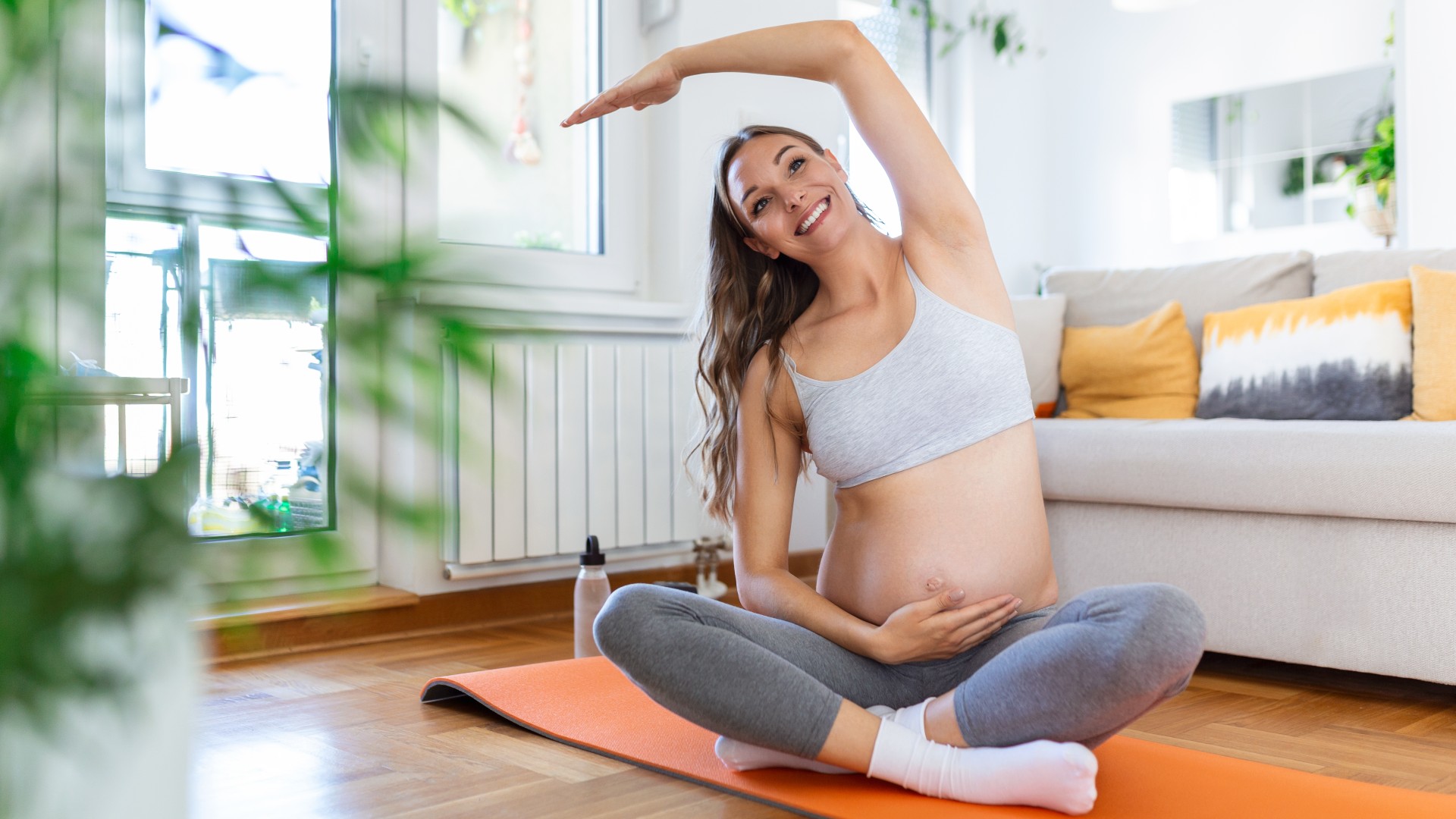
As your bump grows, the body becomes more front-loaded, which puts excess strain on your lower back and joints. The team explains that research consistently shows movement during pregnancy is highly beneficial, with experts citing stretching as one of the top exercises extensively studied in pregnancy and found to be safe and most helpful during pregnancy.
Get instant access to breaking news, the hottest reviews, great deals and helpful tips.
With regular practice, stretching could help prepare the body for giving birth, release tension in tight muscles, alleviate pregnancy-related pain, improve range of motion, and help you move better. Moreover, movement helps release happy hormones that contribute to feeling good.
Regularly using mobility and stretching routines strengthen various muscle groups responsible for good posture and movement, including your back, core, hamstrings, and glutes, to build strength, reduce pain, and even improve breathing.
15-minute four-move stretching routine for pregnancy
This short stretching routine is suitable for women in the first trimester. It should only take 15 minutes, using four passive holds to target your hamstrings, glutes, spine, and hips.
Remember, gently warm up your muscles first, and don’t force yourself into any stretches. Your body produces the relaxin hormone during pregnancy, which loosens ligaments to help you deliver the baby. You might feel more flexible but it could lead to overstretching, so be conscious as you move.
Toomey says, “Pliability has been a large part of my daily routine as an elite athlete and throughout my current pregnancy…I’ve been provided with the right exercises to help me with my movement patterns and range of motion, which have been essential.” And we’re sharing one of these exact routines with you.
1. Dragon: 1:30 per side
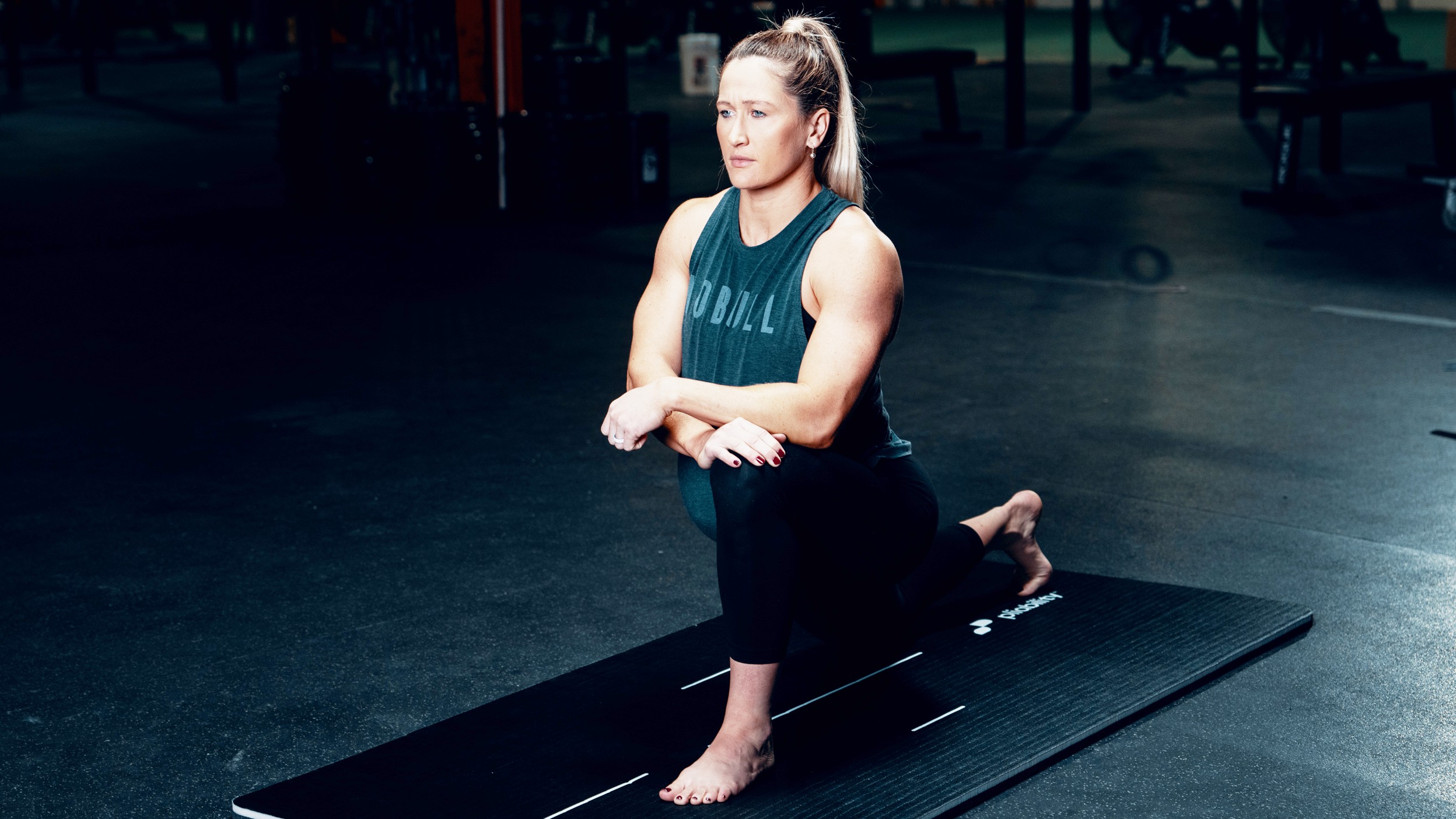
Target: Hip, quads, and spine.
- Start on your hands and knees
- Step your left leg forward and lengthen your right leg behind you
- Bring your hands to your right knee, keeping your spine tall
- Sink into your front knee, allowing your right upper leg to release to the floor
- Continue to breathe, ensuring your front knee stacks over your front heel
- Hold for one minute and 30 seconds, then switch sides.
2. Single leg forward fold: 1:30 per side
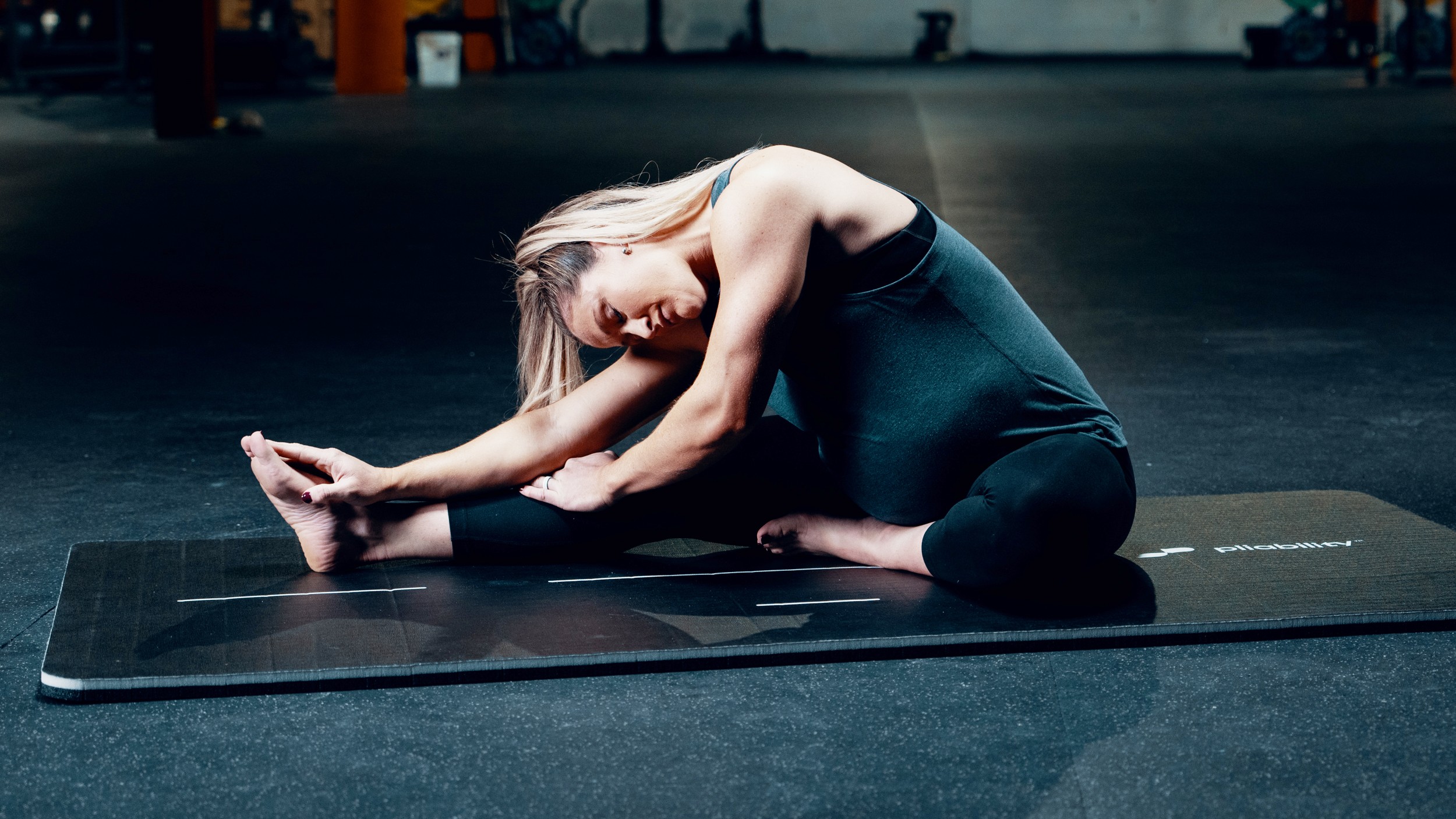
Target: Lower back and hamstrings.
- Start from a seated position
- Bring your right leg straight out in front of you
- Bend your left leg and let your knee gently fall open
- Bring your left foot to the inside of your right thigh
- Lean forward, allowing your back to round and your head to lower toward your leg
- You can leave your hands on the ground or grip your right foot or leg
- Flexing your foot makes it harder, and relaxing will target your lower back
- If needed, sit on a block or bend the knee of your straight leg. Hold for one minute 30 seconds, then switch sides.
3. Pigeon: 1:30 per side
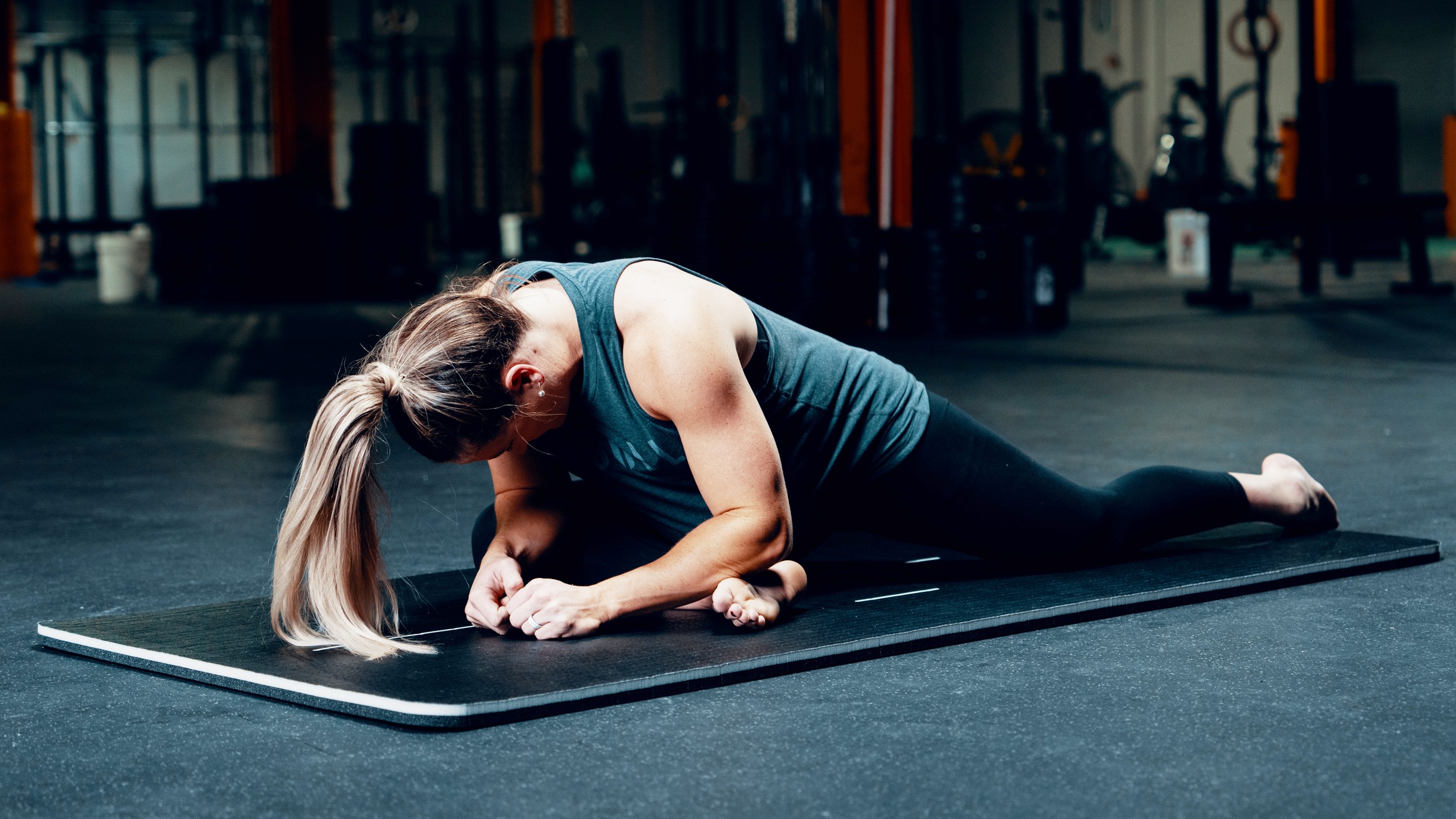
Target: IT band, hips, and glutes.
- Start on your hands and knees
- Place your right shin perpendicular to your upper body or more at an angle
- Slide your left leg straight behind you
- Lean your body forward over your shin or knee, depending on where feels optimal
- Shift your heel closer to your groin for an easier variation
- If your active glute stays lifted off the floor, place a towel underneath to add more support. Hold for one minute 30 seconds, then switch sides.
4. Child’s pose: 3:00
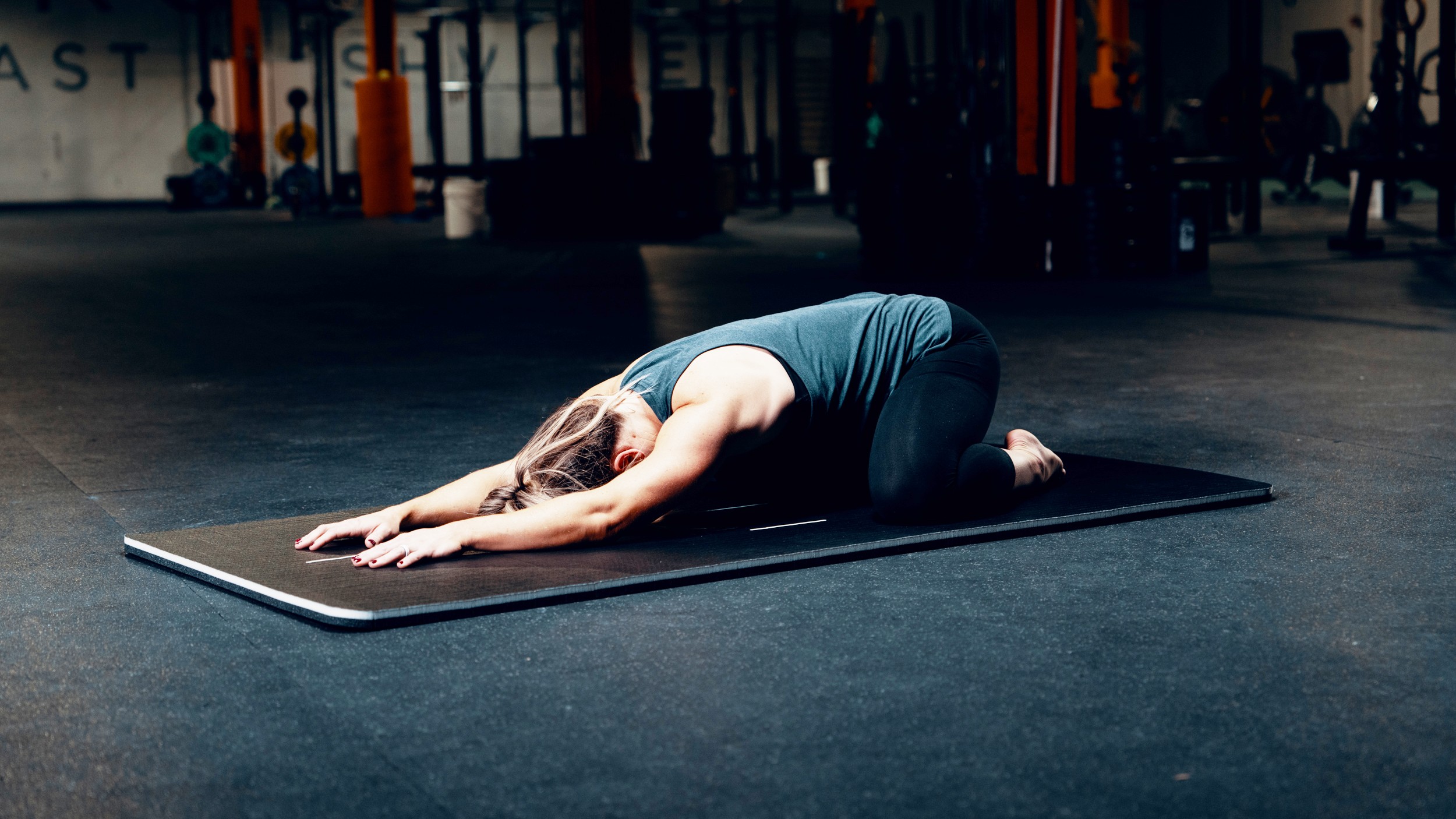
Target: Upper back, shoulders, upper back, chest, arms, and hips.
- Start from your hands and knees
- Sit your bum back toward your feet and let your forehead rest on the ground or a yoga block
- Walk both hands in front of you, palms pressing into the ground
- Big toes should touch with knees wide on the mat. Hold for three minutes.
What stretches should be avoided during pregnancy?
Each trimester is different, but any exercise that places pressure on the pelvic floor should be avoided alongside some core exercises like sit-ups and crunches. Lying on your back for extended periods during late pregnancy is also advised against.
Avoid exercises that involve holding your breath, stooping, excessive bending, or heavy squatting and lifting from the floor, which requires constant overreaching. But these are just some examples, and you should always seek advice from your physician as your body moves through each trimester.
Verdict
Cara Forrester, director of education at The MINT Projct, adds, “With pregnancy can come discomfort, and mobility is an area we want women to be educated in so that they can feel their best and prepare their body for birth.” That said, if at any point you experience pain or an exercise doesn’t feel good, stop immediately and seek advice from your physician.
We also recommend starting with a quick 5-minute breathing exercise to put you in the headspace for the session ahead.
More from Tom's Guide
- These best stretches for tight hip flexors
- Best exercises to do when you’re pregnant
- These are the best pregnancy apps we love

Sam Hopes is a level 3 qualified trainer, a level 2 Reiki practitioner and fitness editor at Tom's Guide. She is also currently undertaking her Yoga For Athletes training course.
Sam has written for various fitness brands and websites over the years and has experience across brands at Future, such as Live Science, Fit&Well, Coach, and T3.
Having coached at fitness studios like F45 and Virgin Active and personal trained, Sam now primarily teaches outdoor bootcamps, bodyweight, calisthenics and kettlebells.
She also coaches mobility and flexibility classes several times a week and believes that true strength comes from a holistic approach to training your body.
Sam has completed two mixed doubles Hyrox competitions in London and the Netherlands and finished her first doubles attempt in 1:11.
